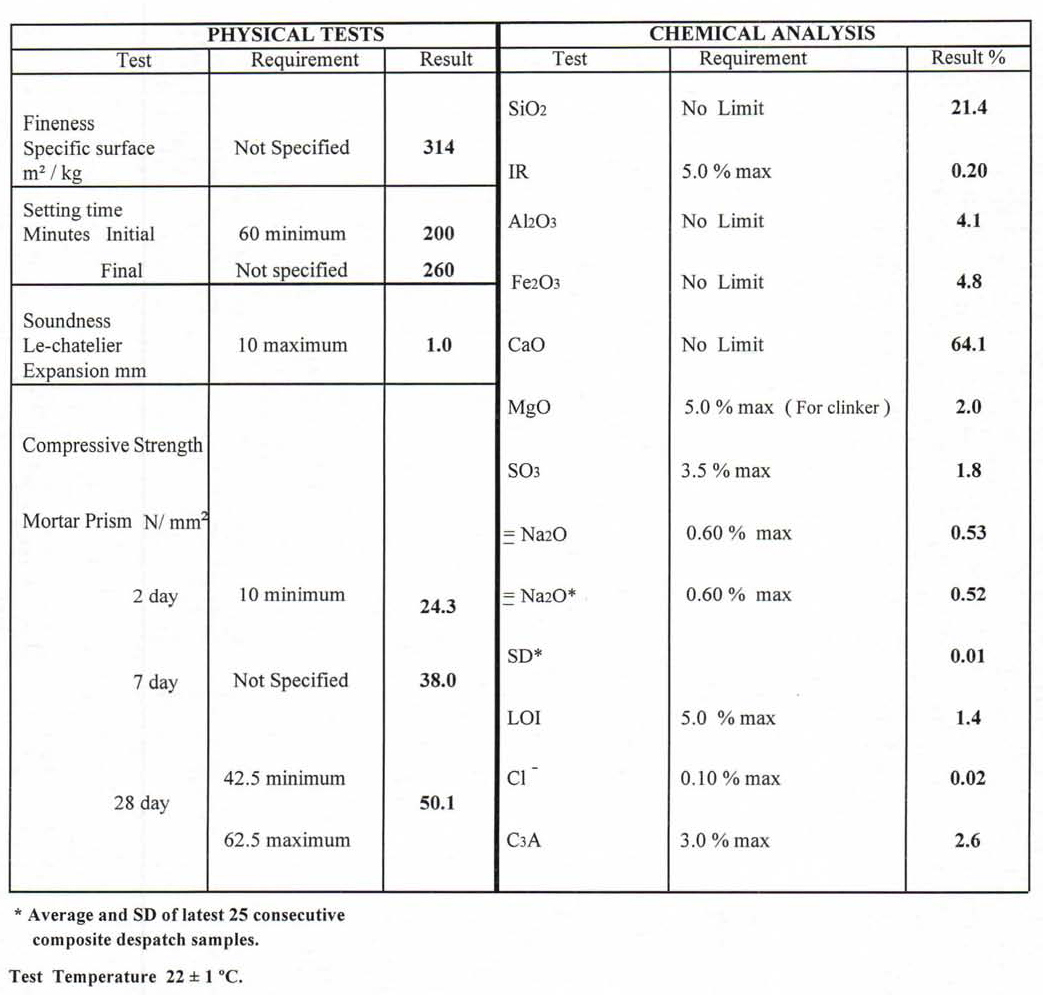
Saqar - Sulphate Resisting Portland Cement (SRC)
SRC cement is used for Foundations, piles, basements and underground structures,Sewage and Water treatment plants and Coastal works, construction of building along the coastal area within 25 km from coast.
Standard:
Saqar - Sulphate Resisting Portland Cement (SRC) CEM I (42.5 R)
SRC is defined as the hydraulic bonding grey fine powder which is the result of crushing a dry mix made of SRC clinker and gypsum.
Adding and mixing water to it harden this grey fine powder, and this is what makes it resistant to water and able to bear compressive stresses, as well as resistant to sulfates that exist in soil, such as clay soil. In this type of cement, it is necessary to decrease the ratio C3A less than 3.5%, because this component reacts with Ca SO4, which exists in soil or water. The result of this reaction is called Ettringite, which causes an increase in the concrete volume then causes cracks that lead to concrete failures.
Uses and applications :
It can be used in all concrete constructions such as reinforced concrete foundations, sewage drainage tanks, bridge foundations, piles...which are exposed to be directly affected by sulfates. It can also be used in sewage concrete pipes and lining steel pipes.
Standard specifications - SRC 42.5 R :
- According to Iraqis Standard No: 5/1984 type V.
- According to EN 197-1:201 1.CEM 1 42.5R-SR.
Properties:

Packing :
- Bags: 50 Kg/bag
- Jumbo plastic bags: 500 Kg/bag, 1000 Kg/bag, 1500 Kg/bag
- It is also available in bulk.
Storage:
It is recommended to follow the coming instructions:
- Storage should be done in a dry place and away from ground moisture.
- It is preferable to store it on wooden bases.
- Cement should be covered to avoid the rain.
- It is recommended not to pile up any more than ten bags, some on others.
Shelf time :
It is recommended to retest the cement after 6 weeks since the production date.
Safety recommendations :
It is recommended to follow the coming instructions:
- Avoid the contact of the cement with the eyes and the skin since it may cause allergic reaction.
- Use gloves and glasses to protect hands and eyes in case of spry applications, or manual mixings.
How to clean the cement remains of the used tools :
- Before setting: by using clean water.
- After setting: by using mechanical methods.
Environment concept :
It is advised and recommended to follow local environmental instructions.
Uses and applications
It can be used in all concrete constructions such as reinforced concrete foundations, sewage drainage tanks, bridge foundations, piles...which are exposed to be directly affected by sulfates. It can also be used in sewage concrete pipes and lining steel pipes.
Uses and applications
It can be used in all concrete constructions such as reinforced concrete foundations, sewage drainage tanks, bridge foundations, piles...which are exposed to be directly affected by sulfates. It can also be used in sewage concrete pipes and lining steel pipes.
Uses and applications
It can be used in all concrete constructions such as reinforced concrete foundations, sewage drainage tanks, bridge foundations, piles...which are exposed to be directly affected by sulfates. It can also be used in sewage concrete pipes and lining steel pipes.